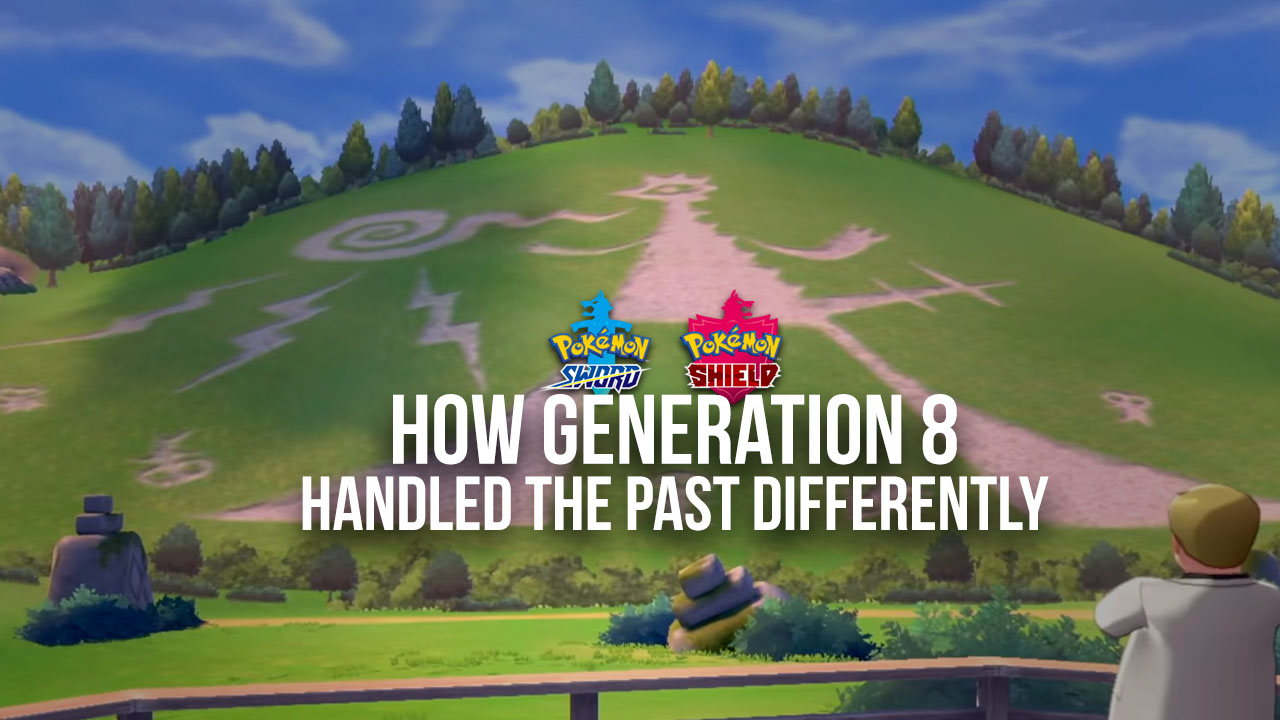Pokémon: Sword and Shield are games that care about the ancient past. Now, that’s nothing unusual: all of the original titles in Pokémon’s core series, barring Red and Blue, feature ancient ruins or revelations about the ancient past, and those revelations are plot-critical in all but Gold and Silver. Almost all Pokémon games, as well as several movies and episodes of the TV show, have something to say about how we live alongside the past. Sword and Shield are interesting, though, because they also care about how we study and talk about the past.
If you’re already thinking, gentle reader, that this sounds like a boring article, then frankly I’m probably not about to change your mind.
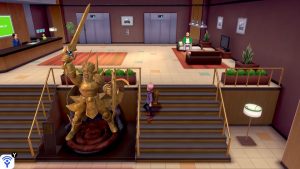
The plot of Sword and Shield is pretty leisurely. With the exception of a scuffle with Bede in Stow-on-Side, we don’t meet with any actual opposition as we travel Galar learning about the region’s myth-history with Sonia, while the decoy “villains,” Team Yell, have more to do with Marnie’s personal storyline than with the events that lead up to our confrontations with Chairman Rose and Eternatus. The main “conflict,” to the extent that there even is one before the final act, is just figuring out what on earth is going on in this region, and how Galar’s ancient past might be about to repeat itself. Over the course of the story of Sword and Shield, Sonia has to piece together a new version of Galar’s history, using clues from important works of art: the statue in Motostoke’s Budew Drop Inn, the great chalk geoglyph at Turffield, the tapestries displayed in the Hammerlocke Vault, the cliffside mural at Stow-on-Side and the ancient shrine hidden behind it, the Hero’s Bath in Circhester, and finally an extra lost tapestry from the Hammerlocke set that turns up in Circhester. Some of these are references to actual British or British-adjacent antiquities, like the chalk geoglyphs of southeast England, or the Bayeux Tapestry, or the Roman bath complex at… well, Bath.
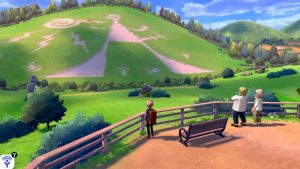
The way this is different from how previous Pokémon games have dealt with ancient history is that there was already a story that was more or less common knowledge in Galar. Even ordinary people seem to know a little bit about the Darkest Day, and there is a story of a hero with a magical sword and shield that somehow put an end to it, saving the region and becoming the founder of Galar’s monarchy – but by the end of the game, we know thanks to Sonia’s work that this story is, at best, very incomplete. In Hoenn, Sinnoh, Unova and Kalos, the big plot-relevant myths seem to be secrets, forgotten by most normal people but recovered by the games’ villains, who see them as a source of power. We tend to learn the truth through exposition from characters who already know it, like Drayden or AZ (Cynthia’s role in the Sinnoh games is a notable exception). In Alola, traditional mythology is fairly well known and seems to be a basically accurate account of Alola’s history behind a layer or two of metaphor, at least in the broad strokes, but it also isn’t quite as important because Sun and Moon are more character-driven than any previous core Pokémon games.
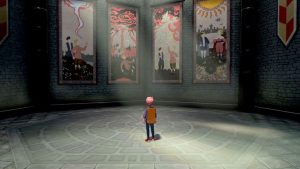
In Sword and Shield, we learn the well-known story up front, and Sonia revises it piece by piece. At the geoglyph, she realises that there must be a connection between the Dynamax phenomenon and the giant Pokémon of the Darkest Day (which… seems pretty obvious, frankly, but apparently wasn’t common knowledge). In Hammerlocke, she figures out that there were two heroes, not one. In Stow-on-Side, the shrine revealed by Bede’s antics shows that the “sword” and “shield” were actually two Pokémon, whom we know as Zacian and Zamazenta; then, in Circhester, the lost tapestry suggests that they either died or fell into some kind of sleep after the Darkest Day. The story of Sword and Shield presents Sonia with a puzzle, and shows us the steps she takes and the evidence she uses to solve it, with the help of the player and Hop. Like real history and archaeology, it’s not just a question of finding the one person who knows the answer or the one book that explains it – it’s a gradual, step-by-step process of questioning the established “truth” using objects from the past that don’t necessarily speak for themselves.
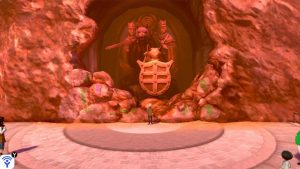
Chairman Rose, meanwhile, has been doing research of his own from a different angle. He’s been studying the Darkest Day itself, in order to control the Pokémon responsible for it: Eternatus. I think it’s interesting, in light of all this, that part of Rose’s plan was for Leon, the Champion of Galar, to be on standby to help contain Eternatus if Rose’s technology failed. When we first learn about the hero with the sword and shield, Hop explicitly compares the hero to Leon, and Rose might have had the same analogy in mind – during the climax, he calls Leon a “knight in shining armor.” But Rose doesn’t seem to have been following Sonia’s research; he doesn’t know that there were actually two heroes, or that the sword and shield were not meaningless medieval trinkets but two Pokémon. His contingency plan parallels the story that was common knowledge when we began – a lone hero standing against the Darkest Day without the help of a legendary Pokémon. Of course, after that plan fails, what actually happens instead is that two heroes, and two heroic Pokémon, must fight the Darkest Day all together. I think there may be a deliberate message here: Rose fails partly because he is ignorant of everything Sonia has spent the past few weeks discovering. He needs to re-enact a mythical event, just like N needed to in Black and White, but Rose doesn’t know all of the players it’ll take to make that happen.
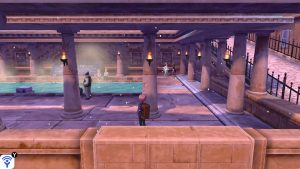
Finally, let’s talk a little about what happens after Rose is defeated and Leon is dethroned: Shielbert and Sordward, a pair of insufferable prats who claim to be descendants of the ancient Galarian monarchy, turn up to insult Sonia, denounce her book on the history of Galar as a bunch of malicious lies, and try to ruin her life and everyone else’s. I don’t think I’m overstepping my authority in saying that Shielbert and Sordward are not fan favourite characters. However, I unironically like their story and the way it continues the themes of Sonia’s journey. Rewriting history is not always a matter of revealing new evidence and being recognised for your genius, and it turns out that for Sonia it’s not that easy.
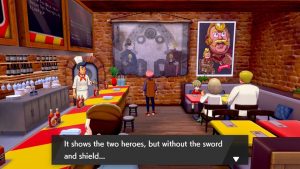
Shielbert and Sordward have benefited throughout their lives from a history that sees their ancestors as heroes who saved Galar. When Sonia tries to correct the record, they see her research and the publication of her book as an attack against them and their position. To them, she’s not just a researcher hunting for the truth: she must have a political agenda. And, well, we’re familiar with the evidence that Sonia based her conclusions on, we were directly involved in her discoveries, and we’ve seen Zacian and Zamazenta save Galar a second time, so we have pretty solid reasons to trust her – but what would Sonia’s book look like to someone who didn’t have our experiences? She’s a crackpot who turned the history of Galar on its head, in the process smearing and delegitimising the ancient monarchy and its descendants! What’s more, Shielbert and Sordward don’t just attack Sonia, and they don’t try to seize power as some other Pokémon villains have. The whole point of their plan – to use Dynamax energy to make Zacian or Zamazenta run amok in Hammerlocke – is to show the people of Galar that these Pokémon are not heroic and don’t deserve the credit that has always belonged to the brothers’ ancestors. They believe that the legendary Pokémon are savage at heart, and they want to prove it. Essentially, they want to produce (or fabricate) new evidence that contradicts Sonia’s narrative, so they can take back control of the story she has retold.
If that sounds far-fetched… well, American readers should be familiar with how the history of the Civil War can be told in radically different ways depending on one’s politics. As a Roman archaeologist, I often see backlash from people who are suspicious of the idea that the Roman Empire was ethnically diverse, or that “alternative” sexualities and gender identities always existed in ancient societies – because those are stories about the past that challenge their view of the present. Sword and Shield “get” this stuff in a way that previous Pokémon games, in my opinion, haven’t. That’s not to say the story doesn’t have other flaws – but this is one thing it does right. I’m interested to see whether the expansions to Sword and Shield (primarily the Crown Tundra, which looks to feature the exploration of ancient ruins quite heavily) will have anything further to add on the same theme.
Let me know what you think of the topics I’ve covered and how Sword and Shield handled the investigation into Galar’s past in the comments below! Or join us on Discord!

